The Role of Mobile Devices in Enhancing the Policing System to Improve Efficiency and Effectiveness
A Practitioner’s Perspective
F. Schiliro*; K.-K.R. Choo*,† * University of South Australia, Adelaide, SA, Australia
† University of Texas at San Antonio, San Antonio, TX, United States
Abstract
Law enforcement agencies respond to, detect, and prevent crime. Within this perspective, it is recognized that police officers play a significant role in adapting and responding to unexpected or unknown situations, as well as recognized situations, such as theft or domestic dispute. Accordingly, “sensemaking” (Weick, 1995; Dervin, 1983, 1992, 1996) and situational awareness are viewed as working concepts that enable us to investigate and improve the interaction between police and information technology.
Information is used strategically in three areas: to make sense of change in its environment, to create new knowledge for innovation, and to make decisions about courses of action. These seemingly distinct processes are in fact complementary pieces of a larger puzzle, and the information behaviors analyzed in each approach interweave into a richer explanation of information use in law enforcement agencies.
Through “sensemaking,” people in an organization give meaning to the events and actions of the organization. Through knowledge creation, the insights of individuals are converted into knowledge that can be used to design new products or improve performance. Finally, in decision making, understanding and knowledge are focused on the selection of and commitment to an appropriate course of action.
Keywords
ICT systems; ICOPS; Intelligent personal assistant; LTE; CRN
1 Introduction
Information and communications technology (ICT) is an umbrella term that includes any communication device or application encompassing mobile phones, computer and network hardware, software, the Internet, satellite systems, and so on. ICT also refers to the various services and applications associated with them, such as videoconferencing and distance learning.
Police organizations within Australia, like other police organizations throughout the world, are dependent on ICT to operate. This need grows as ICT develops.
Poor ICT systems prevent police officers from getting on with their jobs. A better ICT system will raise police productivity so that the same amount of work could be done by fewer officers, or more work could be done by the current number of officers.
Over the years, technological innovations such as the telephone, mobile radio, and tape recorder have been introduced into policing to improve effectiveness. They have had a major influence on how police organizations function and how police do their work (Choo, 2011; Ready and Young, 2015; Tanner and Meyer, 2015; Koper et al., 2015).
When it was introduced into policing over three decades ago, mainframe computer technology also had a profound influence on how police agencies functioned, although it was not well recognized at the time. It allowed the collection, storage, and retrieval of large amounts of data and, as a consequence, police information systems became a reality. However, numerous forms had to be designed to capture the data, and officers were required to report the data by completing the forms. Then people had to be hired to code and feed the data into the computers, while others were made responsible for retrieving and distributing data in different combinations to still others who analyzed the results. In essence, mainframe computer technology created more employment, bureaucracy, and, for the police officer, more paperwork.
Now client/server computer technology has replaced or enhanced mainframe functions and has revolutionized some basic organizational functions and paper systems. Ordering of police supplies, payment of bills and salaries, and keeping of inventory can all be done electronically through much shorter and faster processes executed by fewer people. For example, operational police can take laptop computers into their patrol cars and into investigative interviews to collect data directly. Internal electronic mail systems and the Internet are also giving police access to unlimited information to help them perform their jobs more efficiently. Internal information systems are also more accessible to the police officer. Some police training can also be automated and pursued individually at times convenient to the officer and the organization, thus reducing training costs and eliminating the difficulty of taking a number of officers out of the field at the same time. The trend in information technology during that period has had an appreciable impact on police work. Police agencies are even exploring the integration of all justice information systems to allow justice practitioners and agencies to electronically access and share information between systems and/or across jurisdictional lines. Some agencies have already partially implemented this into their system. Police-related websites and list servs are also enabling officers to consult and share information with colleagues all over the world via the Internet.
However, the phablet, a new network computer technology linked to telecommunications systems, has even more potential to transform police work. The phablet has evolved, too, as smartphones stretched in size to compete for the convenience and capability of tablets. Phablets have screens that measure diagonally 135–178 mm (5.3–6.99 in.), a size that complements screen-intensive activity such as mobile web browsing and multimedia viewing. Phablets may also include software optimized for an integral self-storing stylus to facilitate sketching and annotation. It was perhaps these character traits, the screen size and stylus that distinguished itself with policing?
While Samsung's Galaxy Note is largely credited with pioneering the worldwide phablet market when launched in 2011, examples of early devices with similar form factors date to 1993. By the time the Galaxy Note 3 came to market, policing agencies such as the Australian Federal Police were already conceptualizing how a policing organization's capabilities could be delivered from the IT backend to the frontline officer, thanks in part to the benefits of phablet usage. Will the phablet become the dominant computing device for police of the future?
ICT has an important role to play in the success of criminal investigations, but police competence and management are also important. For ICT to play a significant role it must be adopted, not adapted, into police work as part of a solid base alongside management, competent police officers, and well-organized investigations.
2 Interactive Constable on Patrol System
The police officer's typical duties relate to the response to, the detection of, and the prevention of crime. Officers are expected to respond to a variety of situations that may arise while they are on duty. The law and an organization's policies and procedures dictate how an officer should behave within the community.
In response to the variety of situations that may arise while they are on duty, the officer is required to think critically in a situation and to make sound decisions. But what is critical thinking? There are many ways to initially define it. Unfortunately, internal debate in the field of critical thinking often centers on disagreements between theoreticians (Hale, 2008). Hale convincingly argues that while theoreticians often emphasize different aspects of critical thinking, virtually all agree that it entails the analysis and evaluation of thinking with a view towards improving it; that it includes the development of intellectual traits, which should be applied to one's own thinking; and the thinking of others and thinking within subject disciplines.
Therefore in keeping with this literature, we can divide critical thinking into the following broad dimensions:
• Skilled intellectual analysis: the ability to divide important intellectual constructs into constituent parts so as to internalize and evaluate them
• Skilled intellectual evaluation: the ability to determine the quality of intellectual constructs and their parts
• Intellectual improvement: the ability to creatively devise strategies aimed at correcting weaknesses and improving strengths that have been identified through analysis and evaluation
• Intellectual traits: characteristics of mind necessary for developing fair-minded critical thinkers, such as: perseverance, integrity, courage, empathy, and autonomy. It is argued that such traits guard against the development of sophistic or self-deceptive thinking.
• Knowledge of the problems of thinking: including intrinsic tendencies such as egocentrism and sociometrist, which trap the mind in oversimplified and prejudiced mental states.
Furthermore, these dimensions need be applied to various contexts:
• To thinking generally (one's own thinking, the thinking of a professor, colleague, friend, parent, spouse/partner …)
• To subject disciplines (each of which have specific and sometimes unique forms of analysis and evaluation)
• To personal life, both with regard to significant decisions (e.g., buying a car or house, making career decisions) as well as day-to-day activities (e.g., diet and exercise, parenting, voting and politics, managing finances)
However, when identifying areas of investigation within which to develop a means of making police officers more efficient and effective at the frontline, it is necessary to have some idea of the broad and noncontroversial framework of critical thinking into which these individual understandings can be placed. There is an intimate interrelation between knowledge and thinking; therefore an important capability for policing is knowledge.
Interactive Constable on Patrol System (ICOPS), as seen in Fig. 1, is a mobile application downloaded on a phablet or, where convenient, a tablet. The application itself is a framework delivering a policing organization's capabilities sitting on a platform to the frontline officer. Two examples of those capabilities are: knowledge exchange and communications, which can augment a police officer's knowledge and experience whilst performing his duties. It provides critical information at the time of an incident, improving the police officers options and decision making ability.
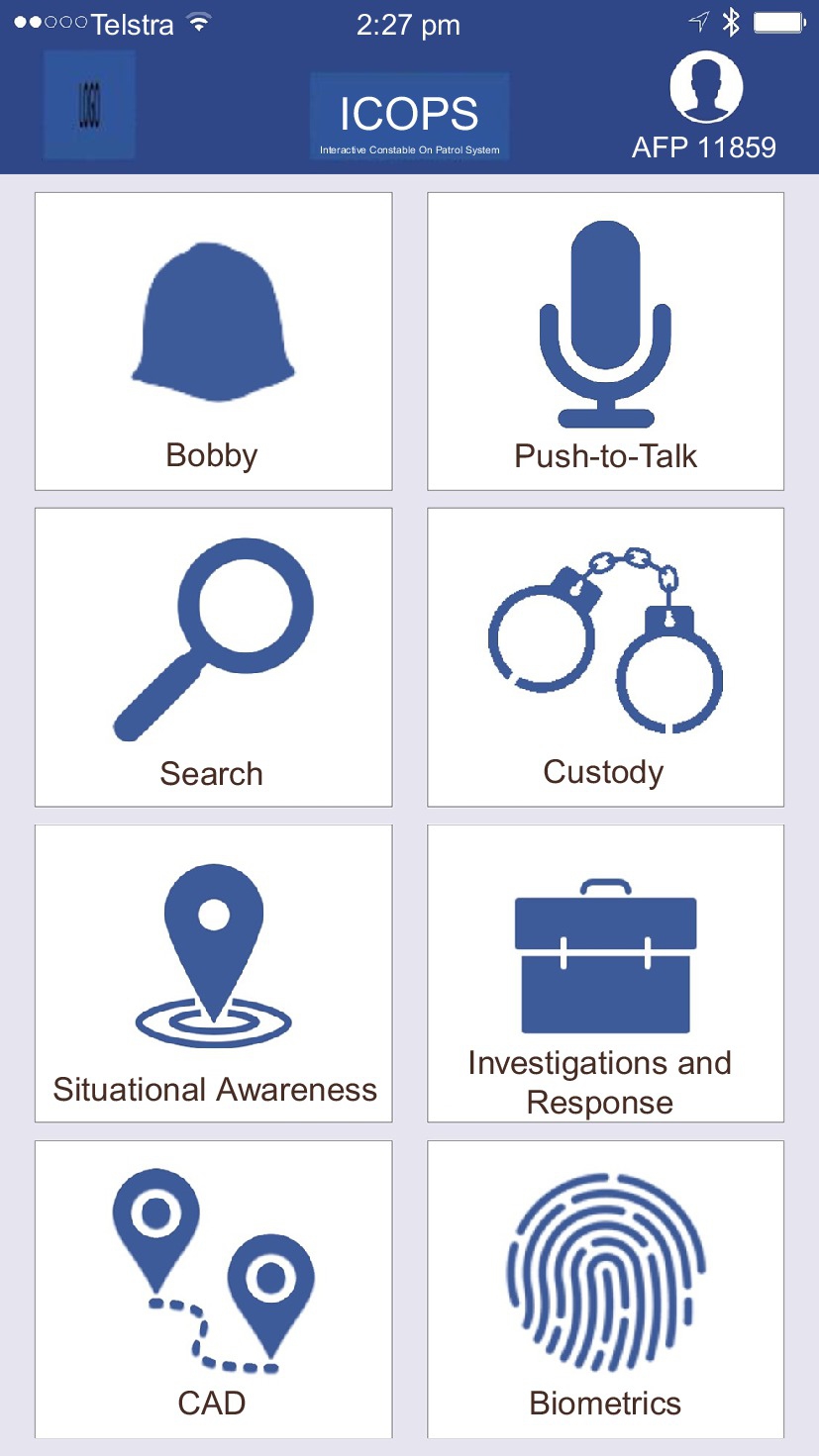
The purpose of the framework is to make police officers more efficient in carrying out their duties.
For example, at the end of a shift, a police officer is typically required to return to a station to enter data into systems, which includes completing and faxing hardcopy documentation to a centralized area for retyping into the database. Around 50 percent of a police officer's time on each shift is spent in the station, with a significant proportion attributed to administrative tasks associated with information capture and reporting. Increasingly, police find that their paperwork burden requires them to commence shifts early and finish them late in order to complete documentation. Delays in processing information and making it available for operational members present difficulties for police in responding to service delivery calls and increase safety risks for both police and the public (Victoria Police, 2014).
3 Capabilities
3.1 Information Management and Knowledge Exchange
In terms of technology, despite the availability of sophisticated recorders and computers, the police notebook remains one of the simplest, most economical, and most basic of investigative tools used to record all facts observed and learned during an investigation.
Therefore, the ICOPS framework sitting on a phablet represents a new technological advancement for police to adopt in order to fulfill a well-overdue function in the area of criminal investigation.
For “knowledge workers” (a term coined by Peter Drucker in 1959), a role which police play, technology becomes a vital enabler of communication, collaboration, and access to rising volumes of information.
ICOPS takes a structured provision of knowledge approach, delivering a range of functions. The most important is workflow technology that controls how the frontline police get information and job tasks. The system also links them to a platform supporting technologies that include information portals, business rules or algorithms to automate decisions, document or content management systems, business process management and monitoring systems, and collaboration tools. Such technologies are often called case management systems because they allow workers to complete an entire case or unit of work. Case management can create value whenever some degree of structure or process can be imposed upon information-intensive work. Until recently, structured provision approaches have been applied mostly to lower-level information tasks that are repetitive, predictable, and thus easier to automate.
Productivity is the major benefit as measured by the completion of key tasks per unit of work time, productivity often rises by 50 percent when organizations implement these technologies. The reason for the improvement was that workers had few distractions and spent no time searching for information.
Adding to the efficiencies, in most cases organizations can route tasks to any worker with the time and expertise to undertake them. For example, if a police officer is away on leave, the system knows and sends cases to another for approval instead. Work processes become more transparent, and it becomes easier to manage them, to exercise approval authority, and to monitor improvements. The structured model also facilitates collaboration and the coordination of tasks. Many implementations help organizations to engage multiple workers and groups to process incidents. These systems also often incorporate business rules or algorithms, determined by an organization's best experts, which help organizations decide the best course of action. For managers, these systems can therefore improve the quality and consistency of decision making, while also speeding it up through automation or semi automation.
By providing smart forms linked to automated workflows as in Figs. 2 and 3, police can complete an incident report at the scene. This will reduce delays in processing information and make it available for operational members, resulting in a reduction of time spent at the station completing paperwork.
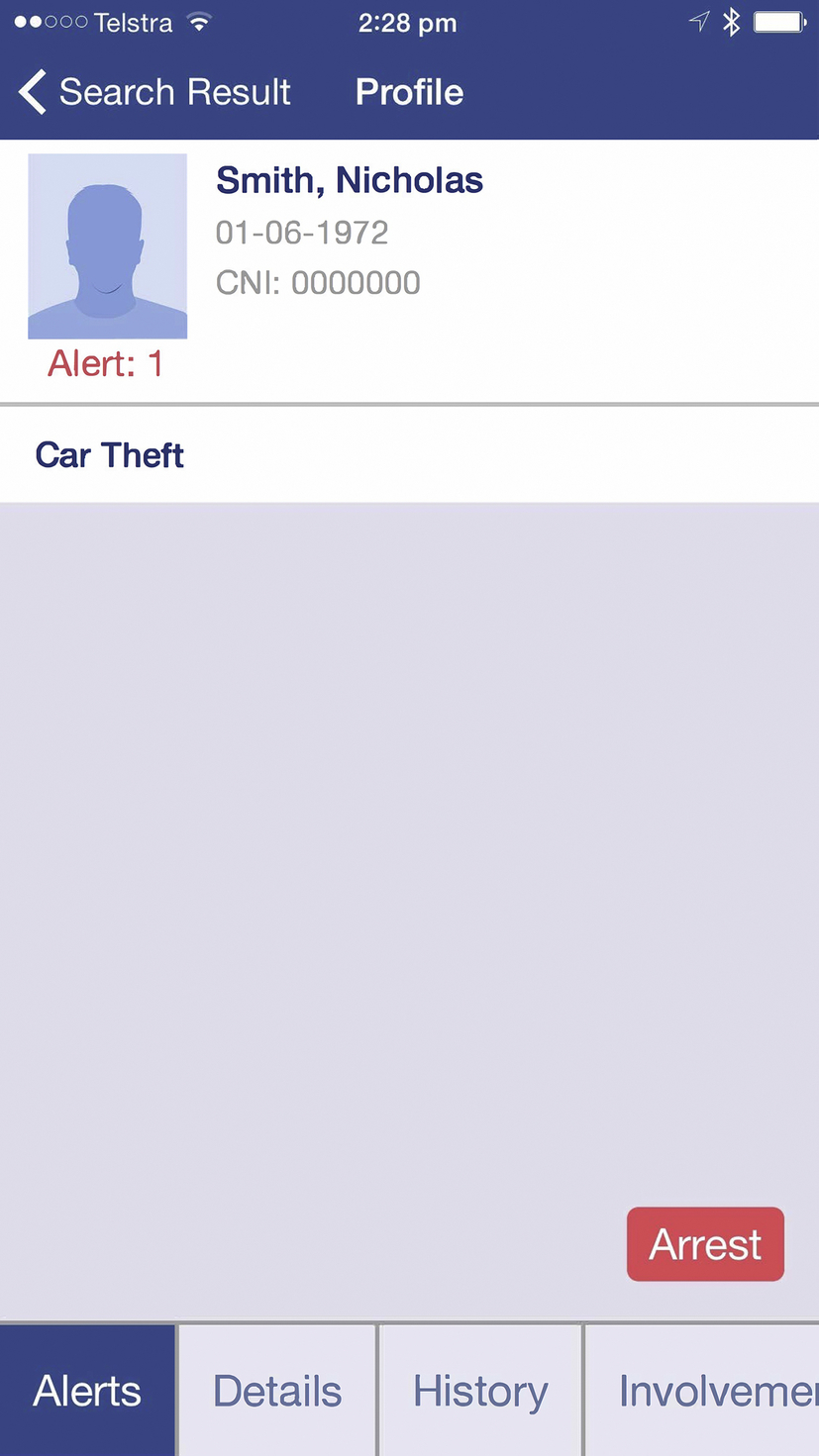
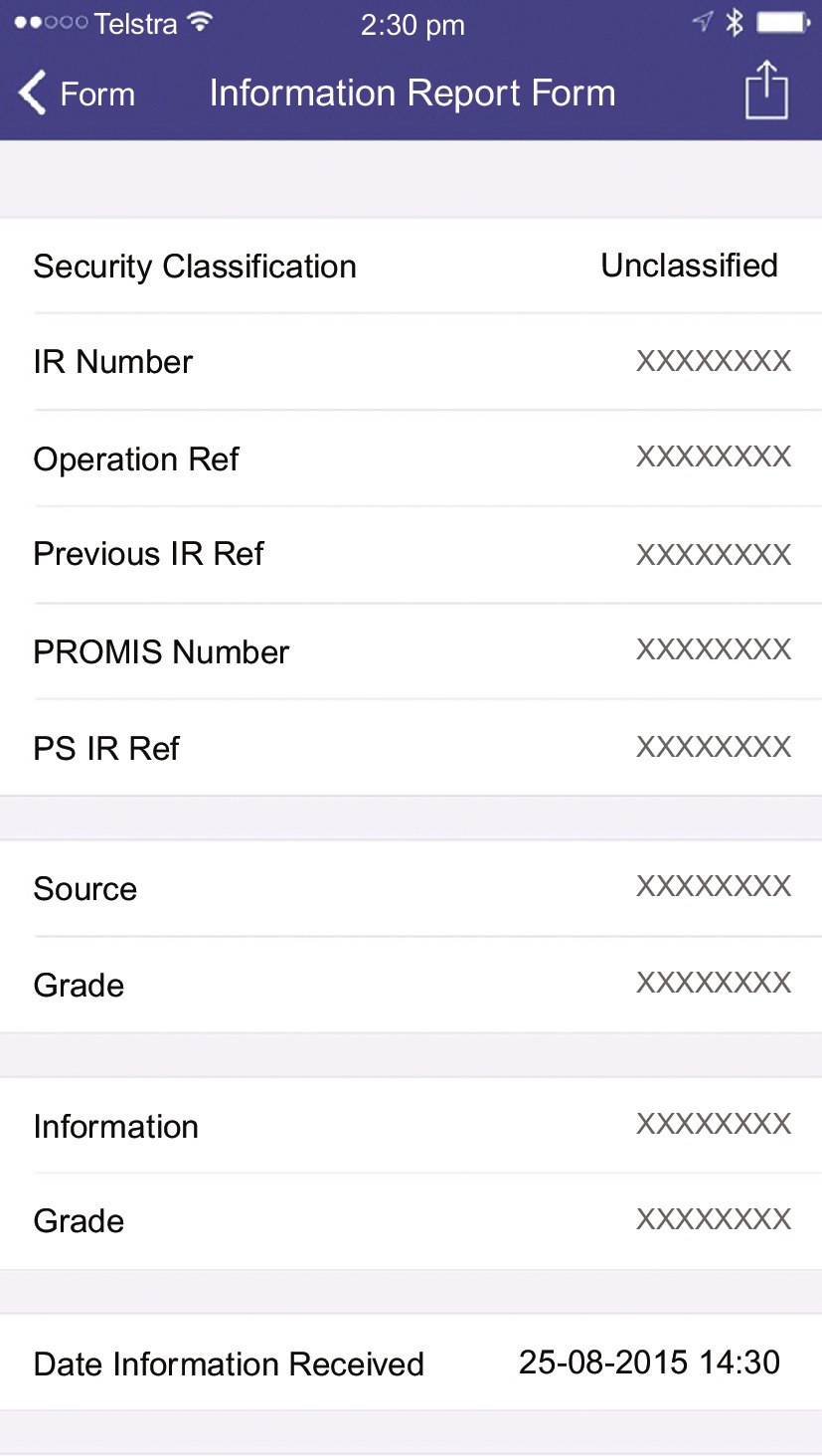
3.2 Intelligent Personal Assistant—Bobby
A new technological advancement on the horizon for the law enforcement community are web service applications known as intelligent personal assistants (IPA). Apple's Siri, Google's Google Now, and Microsoft's Cortana represent a class of emerging IPAs. An IPA is an application that uses inputs such as the user's voice, vision (images), and contextual information to provide assistance by answering questions (using natural language), making recommendations, and performing actions. These IPAs have emerged as one of the fastest-growing Internet services after having been deployed on well-known platforms such as iOS, Android, and Windows Phone, making them ubiquitous on mobile devices worldwide.
Three decades ago, a young officer graduating from the police academy would have been buddied up with a senior officer such as a senior constable or sergeant. This senior officer was an experienced officer with over 10 years of accumulated experience and knowledge. Today an emerging trend exists that a police officer is less likely to make policing a career and is only expected to stay in policing for 5–9 years, decaying the traditional method of knowledge transfer from veteran officers to rookies.
Integrating ICOPS to an unlimited number of public and private databases, employing data mining technology, and communicating with existing law enforcement communications systems (e.g., computer-aided dispatch, GPS-guided locator systems, and mobile data computers) could create a powerful and efficient information management system. A police officer using such a tool in the field could accomplish many tasks simultaneously by simply conversing with the device and issuing verbal commands.
3.3 Communications
One of the key aspects of effective workforce management is the clear, unambiguous communication of instructions, responses, and information. A key benefit of ICOPS will be the reduced demand on traditional police radio communications as information traditionally sought via radio through the communications centers can now be obtained via the mobile device using ICOPS.
When long-term evolution (LTE) technology was chosen by the public safety community, it was envisioned that the network would be used for data and video services and designed to provide access to and from frontline police in Australia. It was also envisioned that the network would be the foundation for interoperability on a nationwide basis, helping to fix the issues that have been hounding public safety officials for more than 30 years, but only became known to the public because of the communications failures experienced during a spate of catastrophic events in recent years such as terrorist attacks (e.g., Sep. 11, London, Madrid, Mumbai), factory explosions (e.g., Enschede fireworks disaster, Toulouse warehouse explosion), floods, and storms (e.g., Hurricane Katrina).
Push-to-talk communications offer instant connectivity with the press of a button. This feature becomes crucial in an emergency or hazardous environments where instructions and information must be relayed quickly, such as between the command center and frontline officers in the field (Figs. 4 and 5).

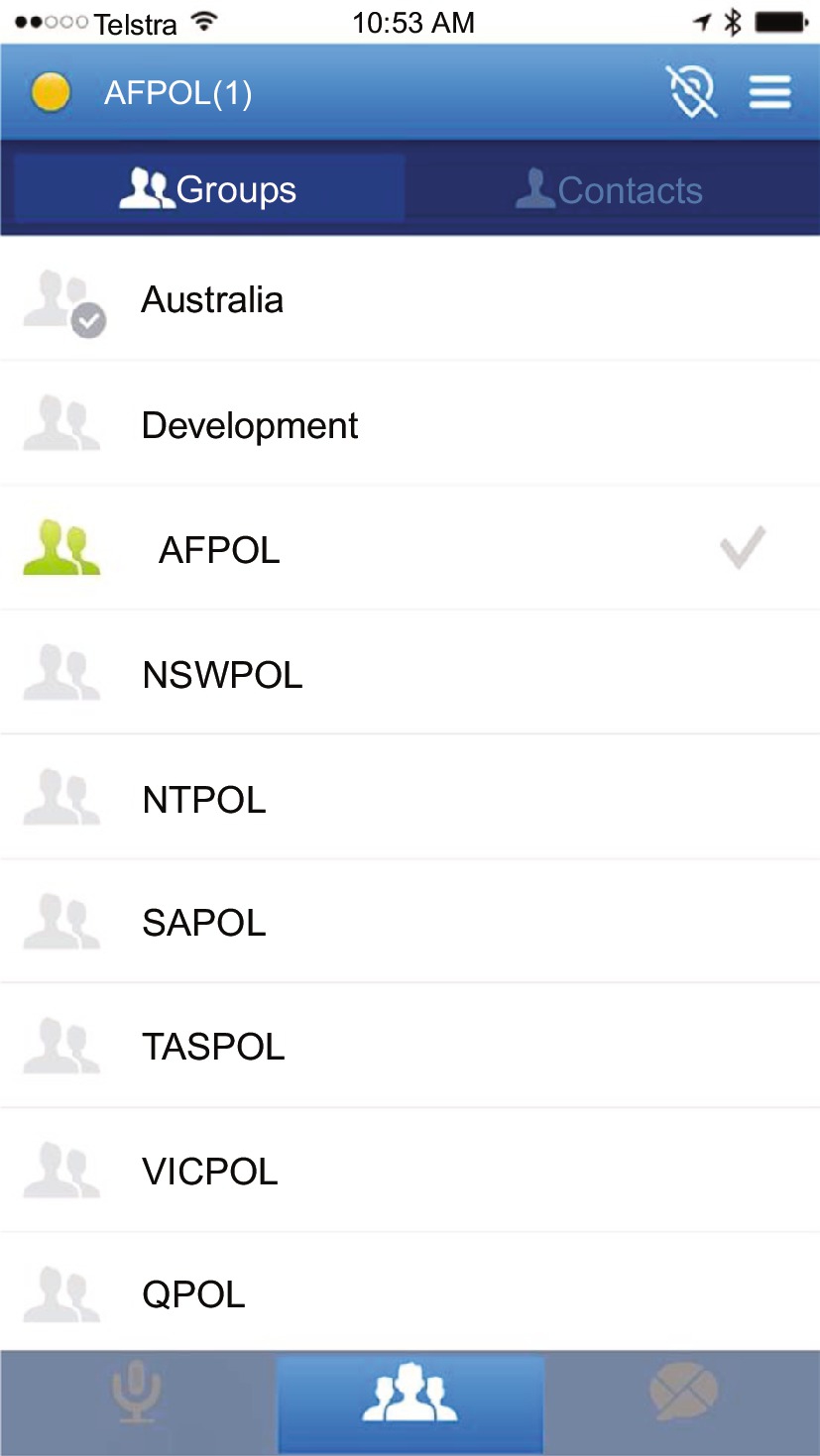
3.4 Custody Management
In Australia, all detained persons must be placed into custody when:
• detained as part of an investigative procedure, or
• detained as not a subject to an investigative procedure, or
• as a suspect not under arrest for the purposes of obtaining a forensic sample
When a detained person is placed into custody, the police officer will be required to manage all aspects of that custody and complete records. As the detaining of a person in most cases will occur in the field, ICOPS was designed to assist the police officer in that task. ICOPS would create a numbered custody record for each detained person, each of which would have a unique custody reference number (CRN). The custody would be created independently of charge information and could be inquired about by all officers.
Once a record is created, the officer entering the information will be deemed the custody manager and be able to add actions to that person's record. The results are improvements like reducing the time officers spend filling out forms and enabling investigative time to be monitored accurately. Custody management in ICOPS will allow the custody managers:
• Automatic calculation of investigative time remaining, taking into account timeouts and alerting the officer to requesting an extension of time if required (Fig. 6).
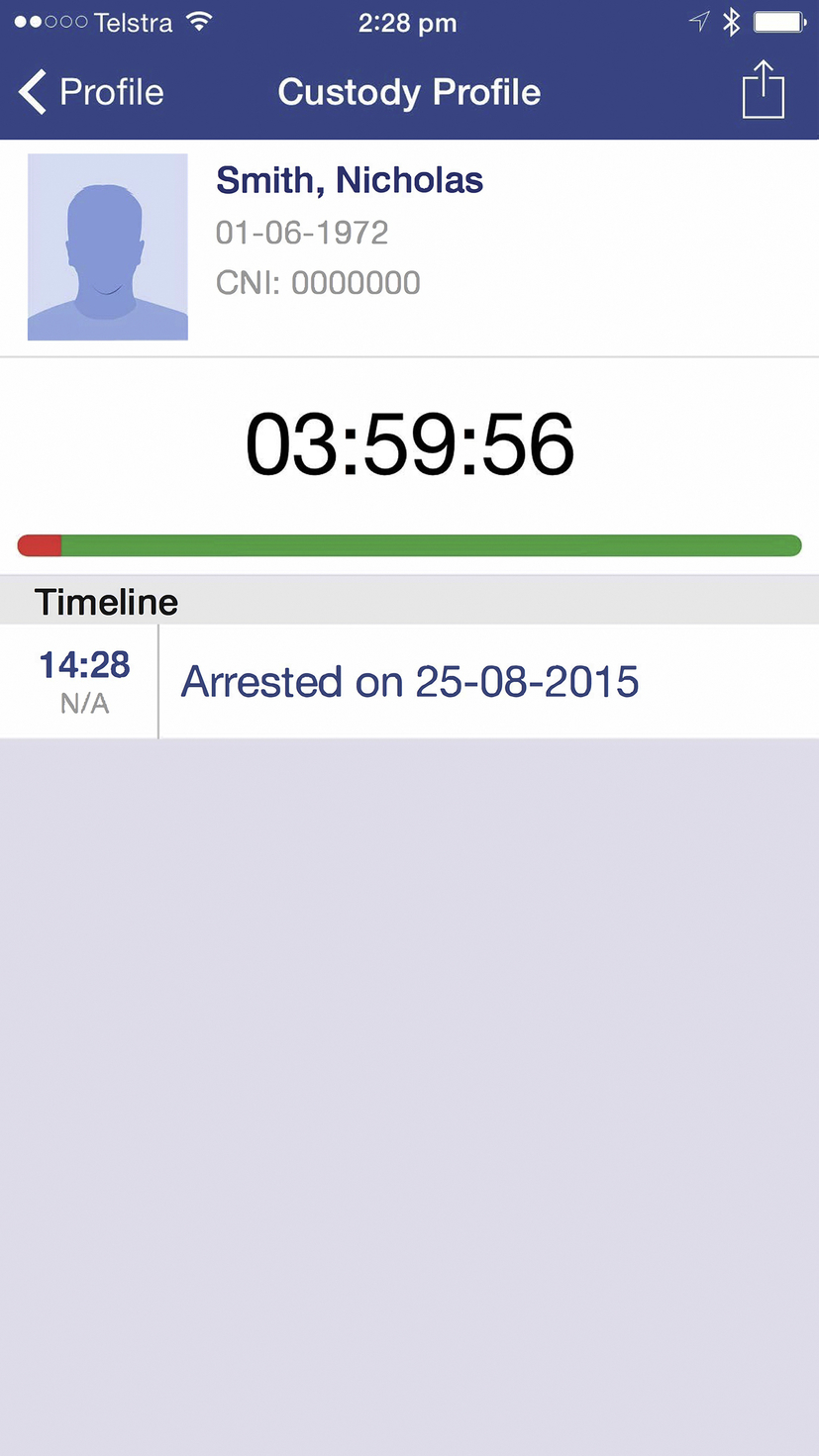
• Alerts to the officer, prompting him or her to request an extension of time prior to the investigative time finishing.
• All actions displayed on the same screen.
• A custody Management record output by the system listing all actions that took place during the person's time in custody.
• A list of all people currently in custody.
3.5 Situational Awareness
Situational awareness typically refers to a person being aware of what is going on around him or her.
Law enforcement is an inherently dangerous occupation. At no time are officers more vulnerable than when they approach an unknown individual or a possibly mentally disturbed or impaired person, whether during a traffic stop, criminal investigation, or domestic violence call. Often, the best protection officers have is access to information about the person with whom they are dealing, the address to which they are dispatched, the vehicle and the driver they have stopped, and other information regarding activities in their jurisdictions. This information provides officers with situational awareness that could significantly increase officer and public safety.
When initiating a traffic stop, standard operating procedure is for an officer to run the vehicle license plate through a national database to acquire as much knowledge as possible about the vehicle owner (usually the driver) before approaching. A query to determine if there are any outstanding warrants on the registered owner of the vehicle, for example, could prompt the officer to request backup before approaching the vehicle. Once contact with the individual is initiated, the availability of additional information (i.e., identification of any other person in the vehicle) will further increase situational awareness.
Law enforcement officers need tools to provide accurate, timely, and complete information in the field. In addition, law enforcement agencies need access to a broad variety of technologies, such as geographic information systems (GIS) in order to build comprehensive situational awareness. Building enterprise-wide information sharing capabilities will enable agencies to improve situational awareness (Fig. 7).
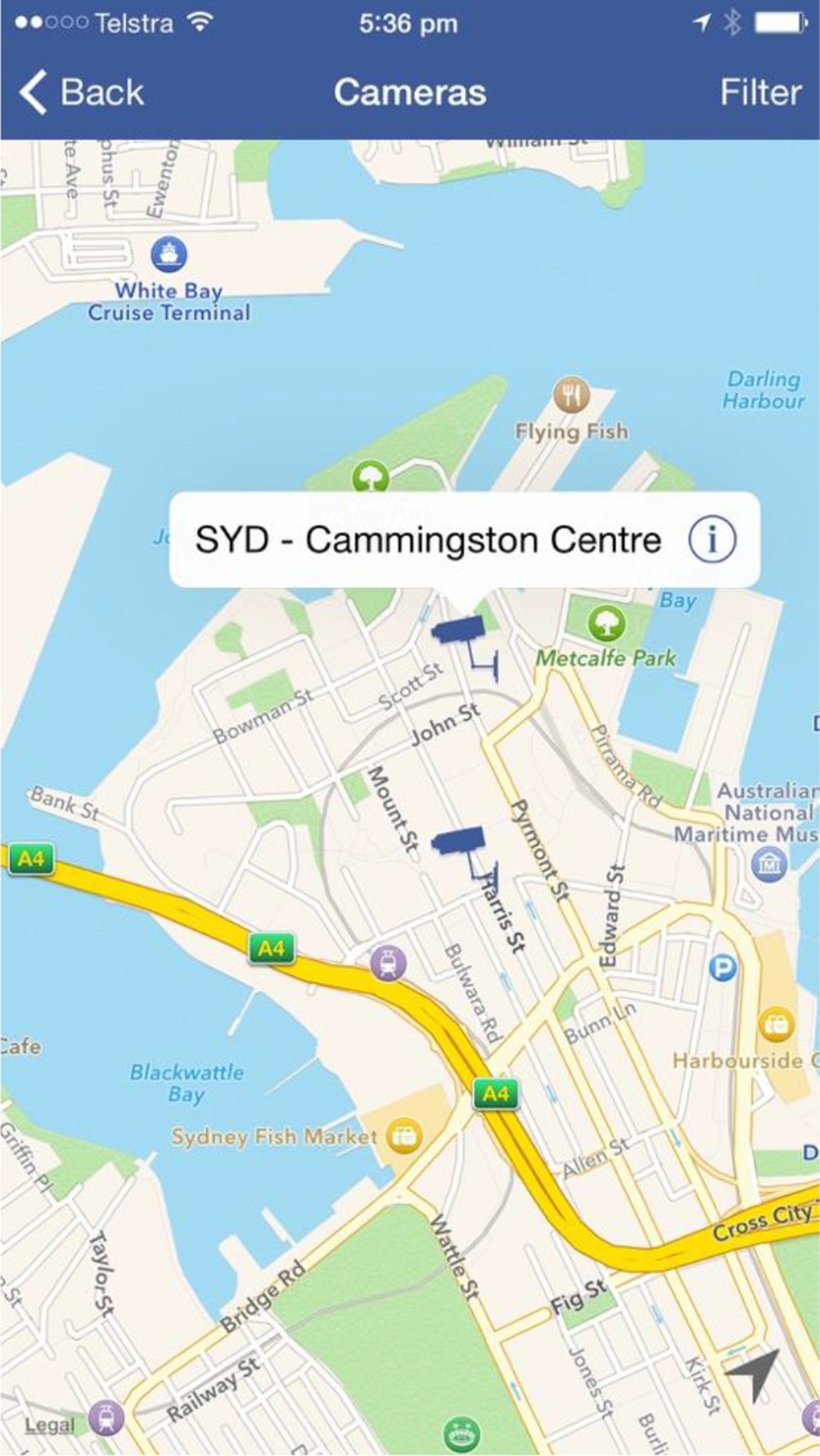
Officers can also increase situational awareness through the use of social media or available online services. First responders to a disturbance at a large public event, for example, may acquire critical location and tactical information from public tweets via the Twitter platform or posted photos or video from cell phones. Images from Google Earth and other sources could inform officers responding to a crime in progress of potential escape routes or exposure to possible threats from suspects in or around a building. Real-time access to surveillance systems or traffic cameras via a handheld device could help officers target their response. However, the accuracy and reliability of information must be considered when utilizing public sources, especially in quickly developing situations. Policies governing the use of unsecure public information must be developed, and officers must be trained in the effective use of such tools.
3.6 Biometrics
As biometric technology expands, so do the methods by which a person can be identified and the accuracy with which an identification can be made.
Fingerprints are the only biometric that leaves something behind. The biometric traces left behind on a piece of physical evidence are called latent prints. They may also be referred to as tracing or markings. Latents are extremely important. And that is why, for the foreseeable future, fingerprints are going to remain law enforcement's most important biometric.
Research is currently being conducted examining complete and fully automated approaches for the identification of low-resolution finger surface/texture images. This research and the obtained results are significant as they point towards the utility of touchless images acquired from the webcam for personal identification and its extension for other utilities like mobile phones.
3.6.1 Facial Recognition
Effective person identification is becoming increasingly central to law enforcement. The police are interested in whether they have already met a suspect before and what they know about them, such as whether they have a criminal record, whether they are armed and violent, etc.
Facial recognition is a relatively new biometric that is getting attention. Facial recognition has many advantages, a major one being that it is the only biometric that can routinely be obtained stealthily. Therefore it has value for use in surveillances. Facial recognition is not as accurate as fingerprints—at least, not yet—but it is becoming increasingly more accurate as new advances in the technology are made.
There are a number of different algorithms that scientists use to measure facial characteristics. New approaches continue to be developed by scientists at universities and in research labs of biometric companies. Each approach works differently, looking at different parts of the face or looking at the face in different ways. Ear shape, for example, is the focus of some facial recognition systems. Ear shape changes very little as we age. None of these facial recognition systems are 100 percent accurate, but some of them are approaching that level (Fig. 8).
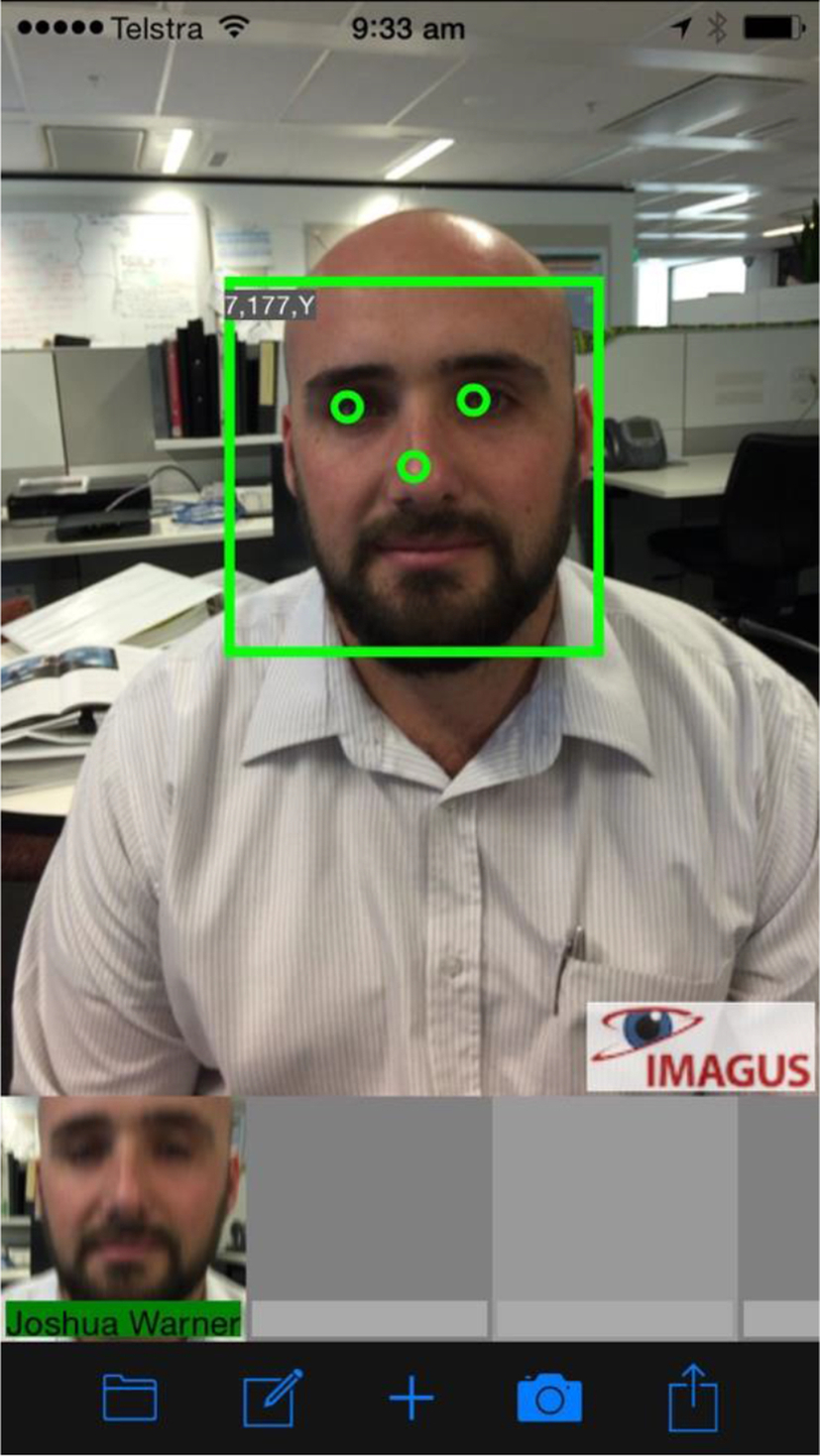
As various facial recognition algorithms merge, the accuracy of facial recognition will increase. For instance, Imagus, a company based in Queensland, Australia, has a good facial recognition algorithm. They have developed a mobile app allowing police to run facial recognition in the field in a practical way without hindering normal police operation. As different methodologies merge, the result will be increased accuracy. Reliable applications in this field are not far off.
3.6.2 Iris Recognition
Iris recognition is another biometric of recent interest. The iris is the colored ring around the eye. Like fingerprints, the irises are formed in the womb after conception so that no two people, even twins, have the same iris.
Everyone has probably seen a very elderly person, such as a 100-year-old woman, photographed or interviewed on television. Sometimes in a close-up of her face you see her eyes sparkling, and they still look very youthful. The reason is she has the same irises as she did when she was a 19-year-old woman. Her skin may have wrinkled with age, but the iris has not changed at all. The iris can be used for both verification and identification. It is not useful in surveillance because no method yet exists to get close enough to the subject's iris without the subject's consent or cooperation.
4 Conclusion
Organizations need to better manage the working life expectations of a police officer. Technology needs to become an enabler to augment the knowledge and experience of new officers graduating from the police academy and working in the field. However, nothing can replace experience, which took earlier generations of police officers a decade to acquire enough. What is needed is change through innovation, implementing clear and practical strategies to deliver technology into the organization that makes police officers more effective and efficient, driving both time and costs down.
What policing organizations in Australia currently lack is a technology infrastructure that can collaborate with internal and external data sources, extracting, transforming, and loading data into a resource that each function within the organization can interrogate and then surface into a knowledge hub that will easily cause the collaboration process to occur both internally and externally.
However, achieving that alone will still not successfully contribute to police officers effectiveness and efficiency, if the information contained cannot reach the police officers to provide them the situational awareness required for them at the frontline. An organization's information can only be beneficial when it is directed and used by the appropriate responder.
Over the next 5 years, a change in the way policing is done needs to occur if a police officer's effectiveness and efficiency are to keep pace in this rapidly changing environment.